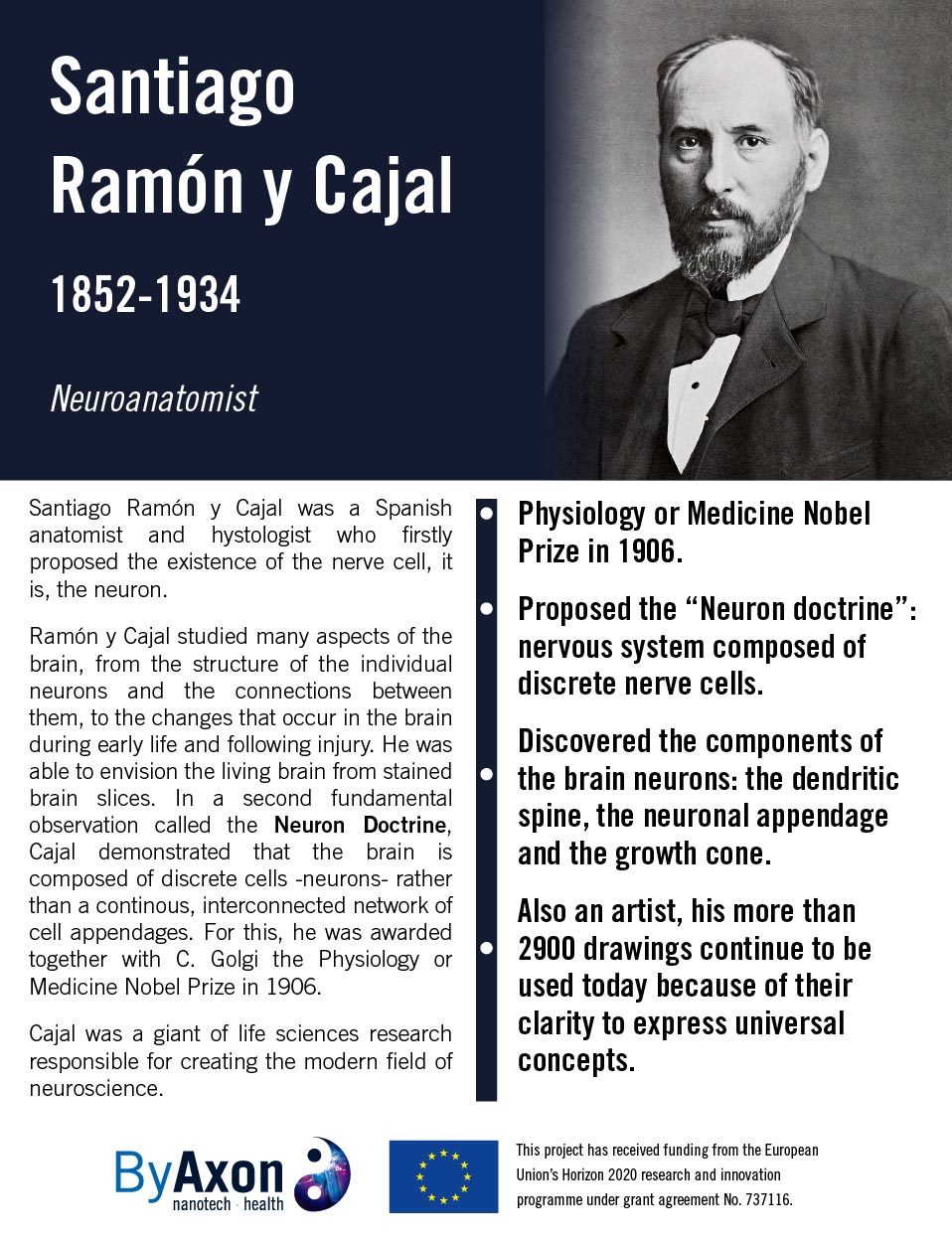Santiago Ramón y Cajal
Neuroanatomist
1852-1934
Santiago Ramón y Cajal was a Spanish anatomist and hystologist who firstly proposed the existence of the nerve cell, it is, the neuron.
Ramón y Cajal studied many aspects of the brain, from the structure of the individual neurons and the connections between them, to the changes that occur in the brain during early life and following injury. He was able to envision the living brain from stained brain slices. In a second fundamental observation called the Neuron Doctrine, Cajal demonstrated that the brain is composed of discrete cells -neurons- rather than a continous, interconnected network of cell appendages. For this, he was awarded together with C. Golgi the Physiology or Medicine Nobel Prize in 1906.
Cajal was a giant of life sciences research responsible for creating the modern field of neuroscience.
Neuroanatomist
1852-1934
Santiago Ramón y Cajal was a Spanish anatomist and hystologist who firstly proposed the existence of the nerve cell, it is, the neuron.
Ramón y Cajal studied many aspects of the brain, from the structure of the individual neurons and the connections between them, to the changes that occur in the brain during early life and following injury. He was able to envision the living brain from stained brain slices. In a second fundamental observation called the Neuron Doctrine, Cajal demonstrated that the brain is composed of discrete cells -neurons- rather than a continous, interconnected network of cell appendages. For this, he was awarded together with C. Golgi the Physiology or Medicine Nobel Prize in 1906.
Cajal was a giant of life sciences research responsible for creating the modern field of neuroscience.


